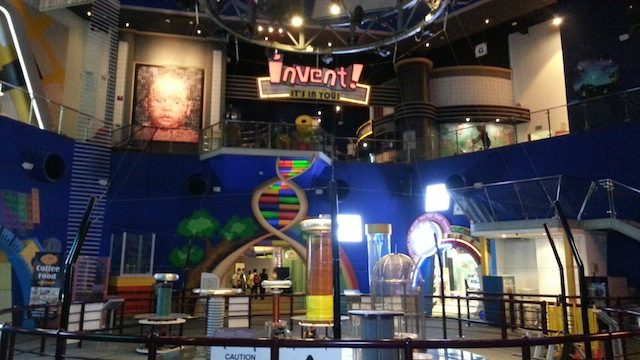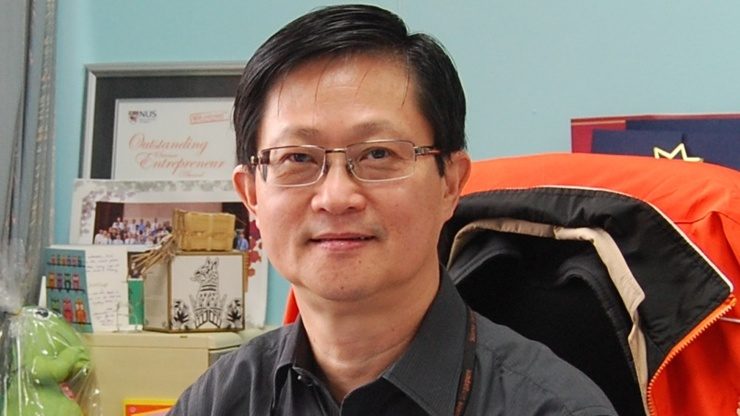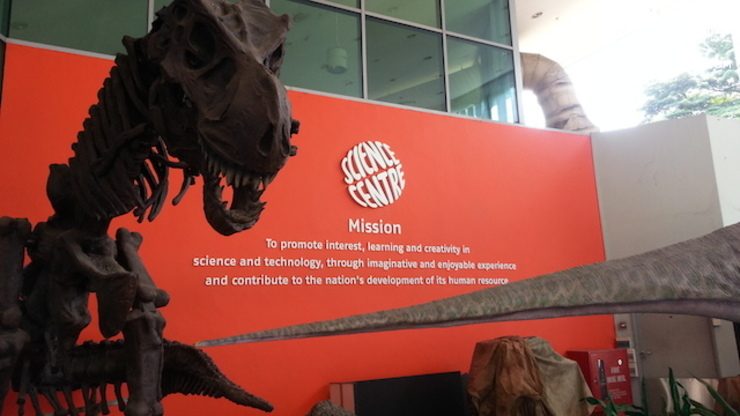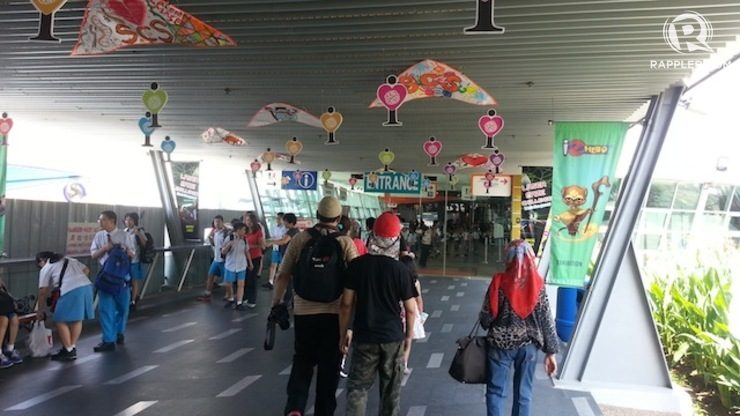SUMMARY
This is AI generated summarization, which may have errors. For context, always refer to the full article.

SINGAPORE – It’s another busy day at the Science Centre Singapore (SCS).
As the clock struck 10 am, the center opened its doors and visitors started streaming in.
Guests are a mix of families, tourists, and individuals, but groups of school children and teachers form the bulk of the guests, looking to explore the center’s various halls and exhibits on science and technology – just as it had been for the past 3 decades.
Since 1977, generations of Singaporean schoolchildren, adults, and tourists have made the trip to the SCS, a place that is at its heart a learning institution.
Approximately 1,000 permanent and temporary exhibits are on display in the 10-hectare SCS compound, located in the Jurong district, on the island’s western side.
Exhibits and activity areas are spread out in the main Science Centre building; outdoor gardens; an Observatory; the Omni-Theatre, an IMAX dome theater; and an indoor snow center.
Many of the exhibits are interactive, allowing children to experience concepts and ideas about science, health, engineering, and the environment in a fun, engaging way.
In one exhibit hall, preschoolers role-play as scientists and engineers for a day; meanwhile, grade school pupils in another room wear lab coats and goggles while learning the basics about genetics and DNA. Outside, in the gardens, kids romp in science-themed play areas.
Evolving institution
The idea for the SCS was started in 1969, when Singapore’s National Museum was made into an art- and history-focused institution. A new place was needed for the science and technology exhibits, and the government decided to put up the SCS.

“[In the beginning] we needed to promote the importance of technology, especially in industry application,” said Prof Lim Tit Meng, Chief Executive of the SCS. “In the earlier exhibits, you could see miniaturized factories and power plants, oil refineries – so it was more of educating the public about the importance of industries.”
As Singapore evolved, the SCS also reflected the country’s journey, particularly its economy. In fact, its very location in the country’s industrial heartland shows its roots: it was established at a time when the city-state had a labor-intensive, industry-focused economy.
Now, as the country moves toward a knowledge-based economy, the Centre’s exhibits have also evolved. “[Exhibits have] become more innovative in terms of bringing out the sense of curiosity, creativity, innovation,” Lim said.
Exhibits are periodically revamped, to reflect the latest scientific advances, and to expose its visitors to some of the most pressing issues of the day.
In its 37-year history, hundreds of thousands of Singaporean schoolkids have made the trip to the center – a sort of rite of passage, a time when they first encountered science and technology outside the confines of the classroom.
Beyond its walls

But the Science Centre’s work isn’t confined to its 10-hectare complex, says Lim.
“The 4 walls [of the Centre] cannot contain us anymore in this location, and therefore we say we shall be a Science Center without walls,” he said. This means, he said, not just doing outreach activities in schools and communities, but also helping organize big events to promote science, such as the annual Science Festival held in the city-state.
And with decades’ worth of experience in running a science institution, the SCS is also helping other science centers and events outside their country.
“In the Philippines’ Mind Museum, we acted as a consultant. Jakarta had their Science Festival – we were involved in pioneering that with them. Even in far-flung Beijing, the Science Carnival [there]…we have been a partner,” he said.
Science Centre Singapore sees itself as a partner in nation-building, particularly in cultivating citizen’s interest in science, technology, engineering and math (STEM).
“If you ask many of the scientist engineers, they would say that early exposure to science and technology all work,” Lim said.
“If you can spark the passion…then I think they will more or less have a clear idea of what they want to be….We see ourselves as strategic partner in sparking the curiosity.”
From ‘nice’ to ‘necessary’

Institutions such as the SCS, he said, has shifted from being something “nice” to have to something “necessary,” especially for a country needing innovative people who can use STEM to drive a competitive, knowledge-based economy.
The arts will also have a role, he said – that is, to make all these hard facts be more accessible to the people, specifically by telling stories. The end goal is to help make Singaporeans scientifically literate, specifically the young.
“Once you are scientifically literate, you are no longer [mystified],” Lim said. “And once you enlighten, then you can make, collectively, better decisions, and hopefully more of our young ones will be inspired to go into not just providing the answers but creating solutions.”
“Singapore can celebrate National Day largely because we base our economy on knowledge, [but] science and technology is the engine of our growth. Without science and technology, we cannot become a first-world country,” he added. – Rappler.com
Add a comment
How does this make you feel?
There are no comments yet. Add your comment to start the conversation.